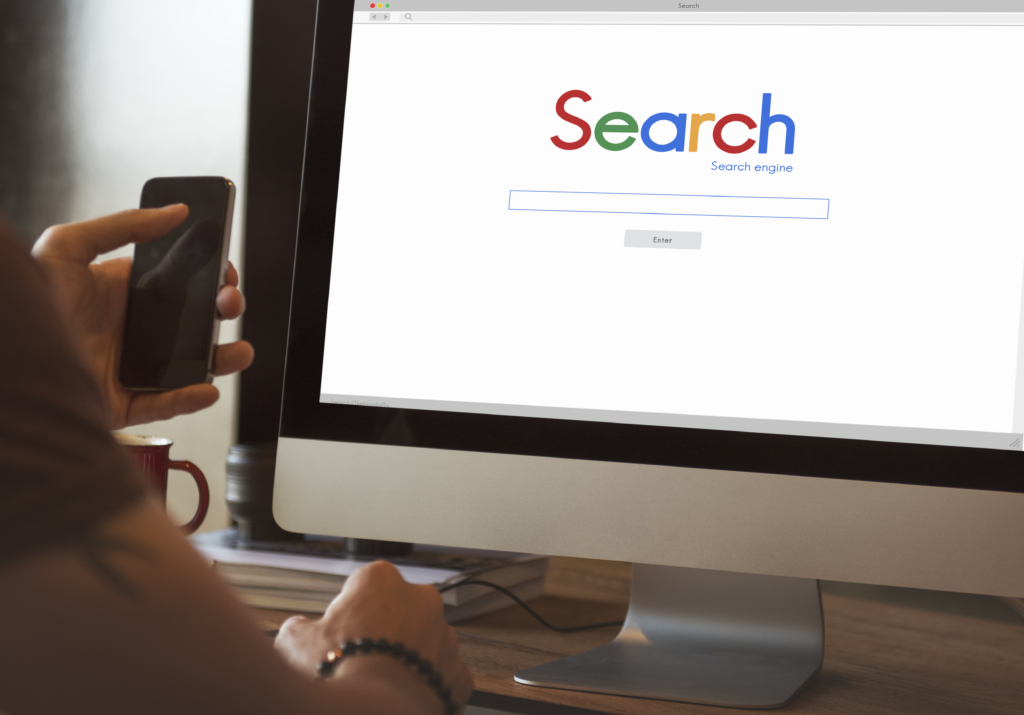
Welcome to North Carolina SEO! If you’re looking to improve your website’s search engine performance, here’s a secret you might not know—designing a user-friendly website is one of the most effective strategies. Google and other search engines prioritize websites that provide a smooth, engaging experience for visitors. A user-friendly design doesn’t just make visitors happy—it directly impacts your rankings, visibility, and overall online success.
If you’re not sure where to start, don’t worry! Below, we’ll explore why user experience is so essential, the key design elements that boost SEO, and actionable tips you can implement today to create a website that both users and search engines love.
Why User Experience Matters for Search Engines
User Experience (UX) describes how visitors feel when they interact with your website. Is it easy to use? Can they find what they’re looking for quickly? A positive user experience keeps people on your site longer, encourages them to explore, and ultimately improves your chances of converting them into customers.
Search engines like Google measure several UX signals to determine your website’s rankings, including:
- Bounce Rate: The percentage of visitors who leave your site after viewing just one page. High bounce rates suggest poor UX.
- Time on Page: How long visitors stay on your site. The longer they stay, the better the signal to search engines.
- Click-Through Rate (CTR): The percentage of people who click on your site from search results. A well-designed site with an inviting meta description increases CTR.
By designing a user-friendly website, you’re not just impressing your visitors—you’re also sending positive signals to search engines, which can lead to improved rankings and more organic traffic.
Key Design Elements That Enhance SEO
Design plays a critical role in how your website performs on search engines and how users interact with it. By focusing on key design elements that balance SEO best practices with user expectations, you can elevate your website’s performance, boost engagement, and secure higher rankings. Let’s explore these vital design factors in more detail and understand how they benefit different types of websites and industries.
1. Mobile-Friendly Design
With an increasing number of users accessing the internet on smartphones, mobile functionality isn’t optional—it’s essential. Google’s mobile-first indexing means your mobile website’s performance often determines search rankings.
- Why It Matters
A mobile-friendly design ensures your website looks great and functions seamlessly on any device. Poor mobile experiences can lead to high bounce rates, signaling to search engines that your site doesn’t meet user needs. - How to Achieve It
Responsive design is the gold standard. It enables your site to adjust automatically to different screen sizes—from smartphones and tablets to desktops. Use mobile-friendly layouts with large, tappable buttons and easily accessible menus to improve navigation. - Industries in Focus
For e-commerce businesses, a smooth mobile experience can directly impact sales. Imagine a user trying to complete a checkout process on a mobile site with clunky navigation—frustration often leads to cart abandonment. Similarly, travel and hospitality sites catering to on-the-go users must ensure smooth mobile usability, as most people book trips and accommodations via mobile devices.
2. Fast Loading Times
Speed is the backbone of a user-friendly website and a major ranking factor for SEO. Slow websites frustrate visitors, who are likely to abandon the site if it takes more than 3 seconds to load.
- Why It Matters
Search engines prioritize fast sites because they provide a better user experience. A delayed load time not only annoys users but also reduces your chances of ranking higher in search results. - How to Achieve It
Compress images to reduce page sizes without sacrificing quality. Enable browser caching and use tools like Google PageSpeed Insights to identify slow-loading web pages and fix them. Consider using a Content Delivery Network (CDN) to distribute your website’s content and load it faster on a global scale. - Industries in Focus
For content-heavy industries like news websites or blogs, speed is essential for retaining readers. Similarly, real estate websites showcasing multiple property images and virtual tours should pay extra attention to image optimization and page speed to maintain user interest.
3. Easy Navigation
Your site’s navigation directly impacts how users perceive and interact with your content. An intuitive, clear menu structure enables visitors to locate information quickly, reducing frustration and cutting bounce rates.
- Why It Matters
When users struggle to find what they’re looking for, they leave. Poor navigation not only impacts user experience but also hurts SEO. Search engines reward sites that provide seamless user journeys. - How to Achieve It
Create logical menu structures with clearly defined categories and subcategories. Incorporate a search bar so users can instantly look up content. Avoid overly cluttered designs that overwhelm visitors—instead, make it easy for them to focus on key features. - Industries in Focus
For educational websites or service providers, where users need specific information quickly (like course details or service options), clear navigation is critical. E-commerce sites also benefit greatly from simple navigation, ensuring customers can move easily between product categories, search options, and checkout pages.
4. Readable and Engaging Content
Content is king, but if users can’t read or engage with it, its value diminishes. How content is presented—from formatting to readability—can make or break a website’s success.
- Why It Matters
Readable, well-organized content improves the user experience. Easy-to-skim articles with clear headings help users find answers faster, reducing frustration. Search engines value content that encourages longer sessions and higher engagement. - How to Achieve It
Use clear, descriptive headings and subheadings to break up text. Keep paragraphs short and use bullet points or numbered lists for better readability. Include adequate white space to avoid overwhelming users visually. - Industries in Focus
Websites in industries like health and fitness, tech, and finance benefit from making complex topics digestible. For instance, a health blog explaining symptoms of a condition should design the content for easy understanding, gaining both reader trust and SEO points.
5. Strong Call-to-Action Elements
Calls-to-Action (CTAs) guide users toward specific actions such as making a purchase, signing up for a newsletter, or reading more. Strategic, visually appealing CTAs significantly improve user engagement and conversions.
- Why It Matters
Clear CTAs lead users down intended pathways, enhancing the overall site experience. They contribute to SEO indirectly by encouraging actions that align with business goals, such as longer session times or social shares. - How to Achieve It
Place CTAs in prominent positions like above the fold or at the end of engaging blog posts. Use contrasting colors, bold fonts, and action verbs like “Buy Now,” “Learn More,” or “Subscribe.” Ensure CTAs load quickly and are easy to click on both desktop and mobile devices. - Industries in Focus
Retail and e-commerce sites thrive on well-placed CTAs that encourage immediate purchases. For SaaS or consulting businesses, “Request a Demo” or “Schedule a Free Consultation” CTAs drive lead generation.
6. High-Quality Visuals
Visuals add value to your website by making content more engaging and easier to digest. From images to videos and infographics, they help break up text-heavy pages and add a punch to your site’s design.
- Why It Matters
High-quality visuals aren’t just eye-catching—they improve the user experience and keep visitors on your site longer. Optimized visuals with accurate alt tags take this a step further by boosting SEO and enhancing accessibility. - How to Achieve It
Optimize images for faster loading, especially on mobile sites. Use infographics to explain complex concepts simply. Add descriptive alt text to all visuals to enhance accessibility for users and signal relevance to search engines. - Industries in Focus
Creative fields like photography, design, and fashion demand exceptional visuals to showcase portfolios or products. Industries such as travel can also captivate audiences using high-quality images or virtual tours of destinations and accommodations.
7. Secure and Accessible Design
A website’s trustworthiness and inclusivity are major factors for both SEO and user retention. Ensuring security and accessibility protects users and keeps them coming back.
- Why It Matters
Google prioritizes secure websites (those using HTTPS) in its search rankings. Accessibility ensures that all users, including those with disabilities, can easily engage with your content, making your site more inclusive and broadening its reach. - How to Achieve It
Use HTTPS to safeguard data transmission. Adopt accessibility practices like alt text for images, proper color contrasts, and assistive device compatibility following Web Content Accessibility Guidelines (WCAG). - Industries in Focus
For financial and healthcare websites handling sensitive information, secure design is paramount to building trust. Government and education websites also need to prioritize accessibility to cater to diverse user bases.
Easy Tips for Creating a User-Friendly Website

Whether you’re building a website from scratch or refining an existing one, prioritizing user experience (UX) is key to ensuring visitors stay engaged, interact with your content, and return for more. A well-thought-out website design not only helps in achieving these goals but also builds trust and loyalty, which are vital for business success. Here are detailed tips to help you create an exceptional user experience, explained with examples and insights into their strategic importance.
1. Understand Your Audience
Your website exists to serve your audience, so having a deep understanding of who they are is the foundation of great design. The more you know about your target users’ needs, preferences, and pain points, the better you can tailor your site to meet their expectations.
- Why It Matters
When your website reflects your audience’s preferences, visitors feel understood and valued. This connection makes them more likely to explore your site, engage with your content, and take desired actions like subscribing or making a purchase. - How to Achieve It
Start by building user personas that represent your ideal website visitors. For instance, if you’re running a fitness blog, you might identify a persona like “Busy Professionals,” focusing on content and designs that cater to their need for quick, actionable tips. Use audience research tools like surveys, interviews, or heatmaps to gather data on user behavior and expectations. - Industries in Focus
For e-commerce businesses, understanding audience preferences might mean showcasing best-selling products or offering personalized recommendations. Educational websites, on the other hand, might focus on straightforward navigation and in-depth resources for students and researchers.
2. Focus on Scannable Design
Most website users don’t read every word—they skim to find the information they’re looking for. A scannable design ensures your content is easy to digest and visually appealing.
- Why It Matters
Visitors often decide within seconds whether to stay on a webpage. By optimizing content for scanning, you ensure users can quickly identify key points, keeping them engaged and reducing bounce rates. - How to Achieve It
Use a variety of techniques to break up large blocks of text. Incorporate clear headings and subheadings to structure your content logically. Use bullets, numbered lists, and bold text to highlight critical information. For example, if you’re running a recipe website, break down instructions into numbered steps and provide ingredient lists in bullet form. - Industries in Focus
News websites can benefit from scannable design by using bold headlines and summary snippets, ensuring readers can quickly find trending or relevant stories. Similarly, SaaS companies can create scannable product pages, making it easier for prospective customers to see features and benefits at a glance.
3. Maintain Consistent Branding
Consistency across your website creates a cohesive and professional appearance, which strengthens your brand identity and builds trust among visitors.
- Why It Matters
Disjointed branding—like mismatched colors, fonts, or logos—can confuse visitors and diminish credibility. A consistent brand helps visitors recognize and remember your business, fostering a sense of professionalism and reliability. - How to Achieve It
Develop a brand style guide outlining your color palette, typography, logo usage, and overall tone. Stick to this guide across all web pages. For example, an online boutique might use pastel colors consistently across its website to reflect a soft, elegant vibe. Use uniform icons and styling for navigation to maintain visual harmony. - Industries in Focus
Branding consistency is especially important for industries like hospitality, where building trust is essential. A chain of boutique hotels, for example, should ensure the same look and feel across local websites to give customers confidence in its authenticity, regardless of location.
4. Leverage Analytics for Continuous Improvement
Web design is an ongoing process, and analytics play a crucial role in identifying areas of success and improvement. By regularly reviewing analytics, you gain valuable insights to refine your site for better performance.
- Why It Matters
Analytics show you how users interact with your site—what’s working and what isn’t. Identifying problem areas allows you to address user pain points and improve overall satisfaction. - How to Achieve It
Use tools like Google Analytics to track key performance metrics like bounce rates, session durations, and conversion paths. For example, if a product page on your site has a high bounce rate, this might signal that the page is too slow to load or lacks engaging content. Use insights to make data-driven decisions, such as restructuring the layout or changing CTA placements. - Industries in Focus
E-commerce platforms can use analytics to test product placements, while non-profit organizations can track donor behavior and optimize donation forms for better results.
5. Test and Iterate
Web design is never “finished.” Continuous testing and iteration ensure your website evolves alongside user habits, technological changes, and market trends.
- Why It Matters
A seamless experience across browsers, devices, and user scenarios builds trust and reduces frustration. Regular testing keeps your site functional, polished, and aligned with consumer expectations. - How to Achieve It
Conduct usability tests on different devices and browsers to identify potential issues. For example, check whether your navigation works well on both Safari and Chrome or how your layout adapts to mobile screens versus desktops. Regular A/B testing can also help optimize specific features. For instance, test different CTA button designs to discover which drives higher engagement. - Industries in Focus
For events and ticketing websites, user testing ensures smooth booking processes during high-traffic periods. Technology startups can also benefit from iteration to align their sites with rapidly changing product offerings and user requirements.
How These Tips Drive User Engagement and Satisfaction
By implementing these practical strategies, your website becomes more than a digital storefront—it transforms into a valuable resource that distinguishes you from competitors.
- Enhanced User Retention
A well-designed, user-centered website encourages visitors to stay longer and explore deeper into your site, signaling its value to search engines. - Improved Brand Loyalty
Consistent branding and usability foster trust, resulting in repeat visits and brand advocacy. - Higher Conversions
A seamless user experience—driven by scannable content, intuitive navigation, and engaging visuals—guides visitors naturally toward completing desired actions, whether it’s making a purchase or signing up for a newsletter.
Strategic Importance for Digital Marketing
A positive user experience extends beyond your website—it amplifies your digital marketing efforts. For example, a blog structured with scannable headings makes it more shareable on social platforms. Mobile-friendly designs enhance email marketing campaigns, as recipients can click through and easily browse your content. Even paid search campaigns benefit, as landing pages with optimized CTAs and engaging designs have higher success rates.
How North Carolina SEO Can Help
At North Carolina SEO, we know that designing a user-friendly website is about more than aesthetics—it’s about creating a seamless experience that boosts your SEO performance. Here’s how we can help:
- Website Audits: We analyze your website and identify design elements that could be holding you back.
- Responsive Design Services: We create mobile-friendly websites that provide a great experience on all devices.
- Content Optimization: From headings to CTAs, we ensure your content works just as hard as your design.
- Ongoing Support: Digital trends evolve quickly. We provide continuous assistance to keep your website ahead of the curve.
Final Thoughts
A user-friendly website is the foundation of successful online performance. By focusing on intuitive navigation, fast load times, readable content, and mobile compatibility, you can create a site that engages visitors and ranks well with search engines.
At North Carolina SEO, we’re passionate about helping businesses like yours thrive online. Need help designing a website that’s both user-friendly and SEO-friendly? Reach out today, and we’ll work together to create a digital experience your visitors will love.
Have questions about creating a user-friendly website? Contact us—we’re here to guide you every step of the way!

